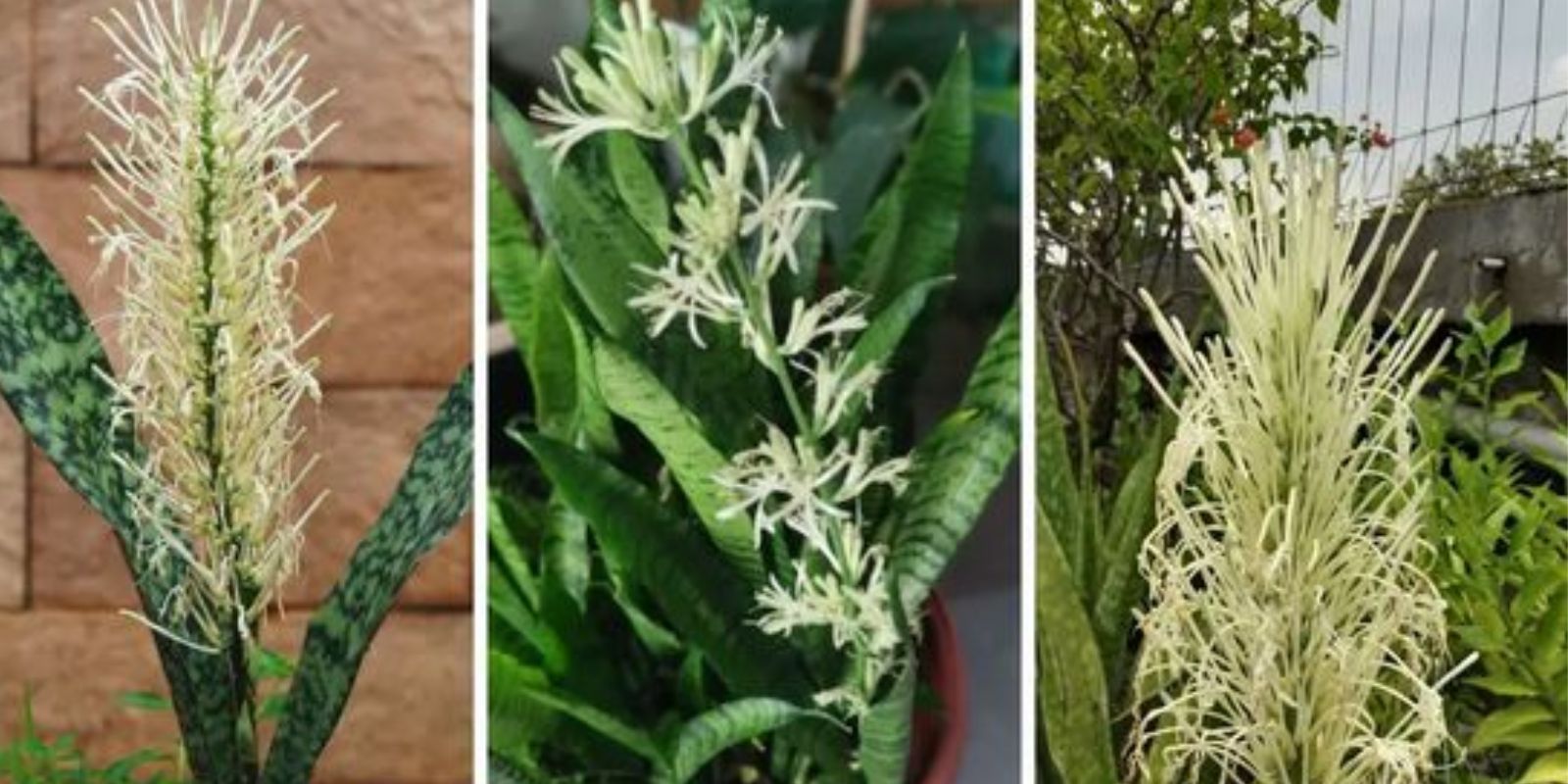The Mother-in-Law’s Tongue, also known as Snake Plant or Sansevieria, is celebrated for its resilience and striking foliage. While it’s not commonly known for its flowers, coaxing this plant to bloom can be a rare and rewarding experience. In this guide, we’ll explore the steps you can take to encourage your Sansevieria to flower, transforming its reputation as a purely ornamental foliage plant into a delightful flowering specimen.
Introduction to Sansevieria
Sansevieria is a genus of perennial plants native to Africa, Madagascar, and southern Asia. These plants are characterized by their sword-shaped leaves that can be variegated or patterned, adding a touch of elegance to any indoor setting. While their leaves are the main attraction, some species of Sansevieria can produce small, fragrant flowers on occasion, typically in response to specific environmental conditions.
Benefits of Growing Sansevieria
- Air Purification: Like other houseplants, Sansevieria helps improve indoor air quality by removing toxins such as formaldehyde and benzene.
- Low Maintenance: Known for their ability to thrive on neglect, Sansevieria are perfect for busy households or novice gardeners.
- Variety of Shapes and Sizes: With numerous cultivars available, you can find Sansevieria plants ranging from compact rosettes to tall, architectural varieties.
Steps to Encourage Flowering in Sansevieria
1. Optimal Growing Conditions
Sansevieria can tolerate a wide range of conditions, but providing optimal care can encourage flowering:
- Light: Place your Sansevieria in a location with bright, indirect light. While these plants can tolerate low light conditions, they may not flower as readily without sufficient light.
- Temperature: Maintain a consistent room temperature between 60-85°F (15-29°C). Avoid placing the plant near drafts or vents.
- Humidity: Sansevieria can tolerate low humidity, but they appreciate moderate humidity levels. If your home is very dry, consider using a humidity tray or misting the leaves occasionally.
2. Watering Regimen
- Moderate Watering: Allow the soil to dry out completely between waterings. Sansevieria are susceptible to root rot if overwatered, so it’s essential to let the soil dry out slightly before watering again.
- Frequency: During the growing season (spring and summer), water once every 2-3 weeks. In winter, reduce watering to once a month or when the top inch of soil feels dry.
3. Fertilization
- Minimal Fertilization: Sansevieria are low-demand plants when it comes to nutrients. Use a balanced, diluted fertilizer once every 4-6 weeks during the growing season to support flowering.
- Avoid Excess Fertilizer: Too much fertilizer can lead to leggy growth or inhibit flowering. Always dilute fertilizer according to package instructions.
4. Patience and Observation
- Monitor Growth: Keep an eye on your Sansevieria for any signs of a flower spike emerging from the center of the plant. Flowering typically occurs during the spring or summer months.
- Environmental Cues: Changes in temperature or light levels can sometimes trigger Sansevieria to produce flowers. Providing consistent, optimal conditions can increase the likelihood of blooming.
5. Enjoying the Blooms
- Celebrate Success: Once your Sansevieria produces flowers, take time to appreciate their delicate beauty and fragrance. The flowers are typically small and tubular, often white or cream-colored, and may have a pleasant scent.
- Duration: While Sansevieria flowers may not last for an extended period, their appearance is a testament to your successful care and encouragement of the plant’s natural processes.
Common Challenges and Troubleshooting
Pest Control
- Spider Mites: Check your Sansevieria regularly for signs of spider mites, especially if conditions become too dry. Treat infestations promptly with insecticidal soap or neem oil.
- Mealybugs: These pests can also infest Sansevieria, typically appearing as small, cottony masses along the leaves or in leaf axils. Remove them manually and treat with appropriate insecticides if necessary.
Disease Prevention
- Root Rot: Ensure your Sansevieria is planted in well-draining soil and avoid overwatering. If symptoms of root rot appear (yellowing leaves, mushy stems), remove affected parts and repot in fresh soil.
Leaf Care
- Cleaning: Keep the leaves clean by wiping them gently with a damp cloth. Dust accumulation can inhibit photosynthesis and detract from the plant’s appearance.
Conclusion
Encouraging your Sansevieria to bloom can be a fulfilling endeavor, transforming this resilient plant into a stunning flowering specimen. By providing optimal growing conditions, monitoring its growth closely, and exercising patience, you can enjoy the rare and delightful sight of Sansevieria flowers in your home. Share your successes and experiences with fellow plant enthusiasts, and continue to explore the beauty and diversity of indoor gardening with Sansevieria.
Motivation:
Embrace the challenge of coaxing your Sansevieria to bloom and share your journey with others who appreciate the beauty of houseplants. Let your efforts inspire and educate, as you cultivate not only a plant but a sense of accomplishment and joy in indoor gardening.

